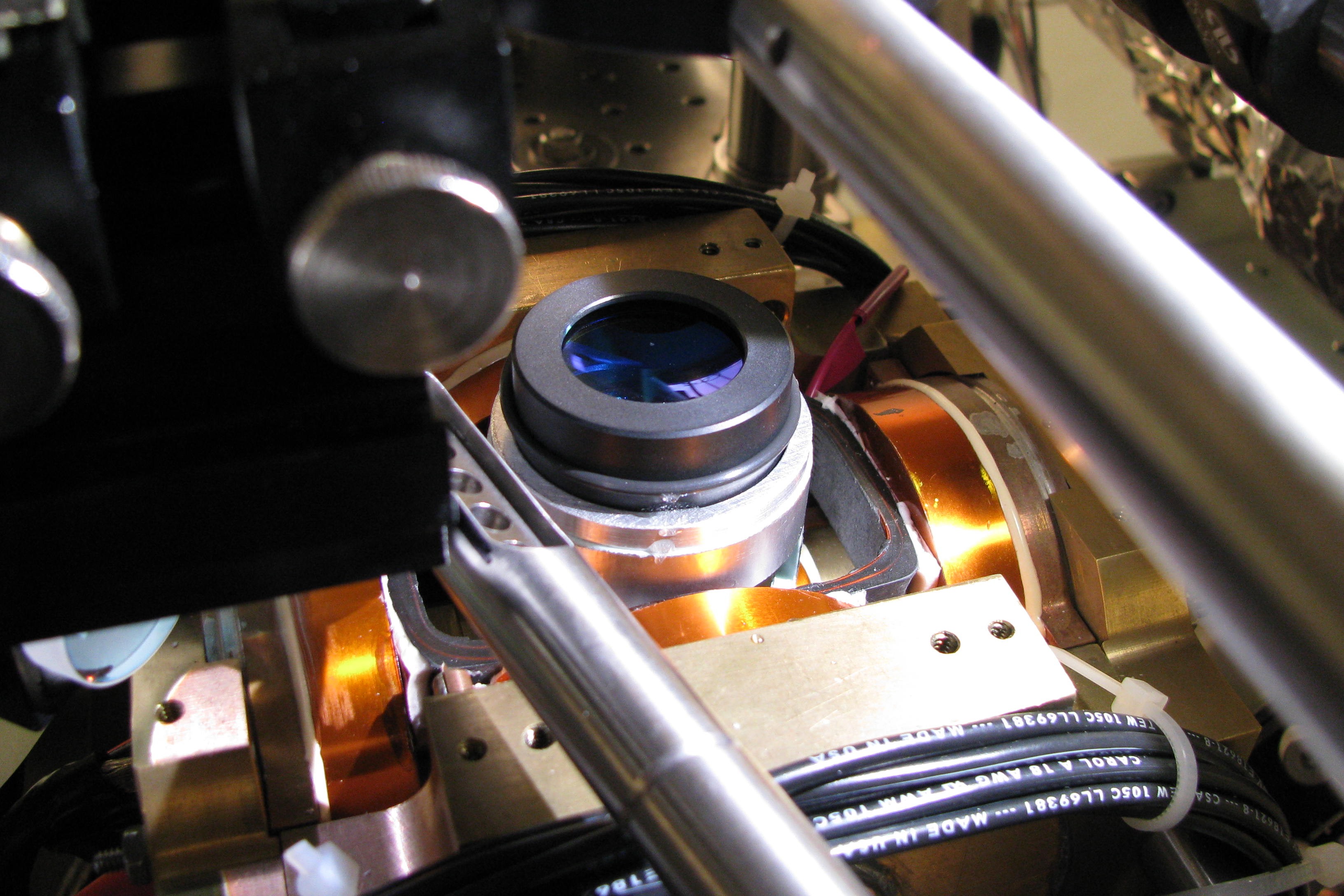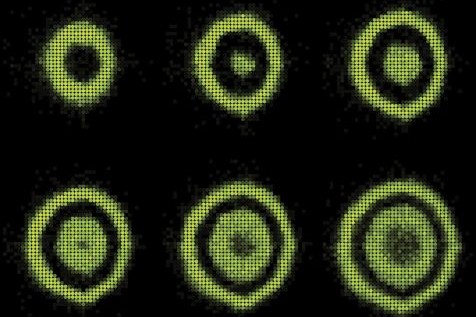Rubidium Lab
Postdocs
Graduate Students
Former Group Members
Graduate Student (2018-2025)
Postdoc (2022-2024)
Graduate Student (2017-2023)
Postdoc (2017-2021)
Graduate Student (2015-2021)
Graduate Student (2012-2018)
Graduate Student (2013-2019)
Graduate Student (2009-2017)
Postdoc (2015-2017)
Graduate Student (2016-2017)
Graduate Student (2010-2015)
Postdoc (2012-2015)
Graduate Student (2009-2014)
Visiting Student (2012-2013)
Postdoc (2010-2012)
Graduate Student (2006-2011)
Diploma/Master’s Student
Diploma/Master’s Student
Postdoc (200x-2010)
Graduate Student (200x-2010)
Graduate Student (200x-2009)
Ultracold atomic systems can be used as quantum simulators to study a range of phenomena in strongly-correlated materials ranging from high-Tc superconductors to quantum magnets. The micron-scale spacing of atoms in these systems provides an opportunity to optically image fluctuations and correlations in strongly correlated systems in a way not possible in condensed matter. Our quantum gas microscopy (QGM) allows, for the first time, for optical imaging and manipulation of strongly-interacting quantum gases containing thousands of atoms at the single atom level. The ideas introduced in QGM are quite general and can be applied to a range of other systems including fermionic (See our Fermi Gas Microscope experiment) and dipolar gases (See our planned Erbium QGM). In addition, it provides a path to quantum computation in a system with a scalable architecture.
Multi-Particle Quantum Walks in a Dipole-Conserving Bose-Hubbard Model
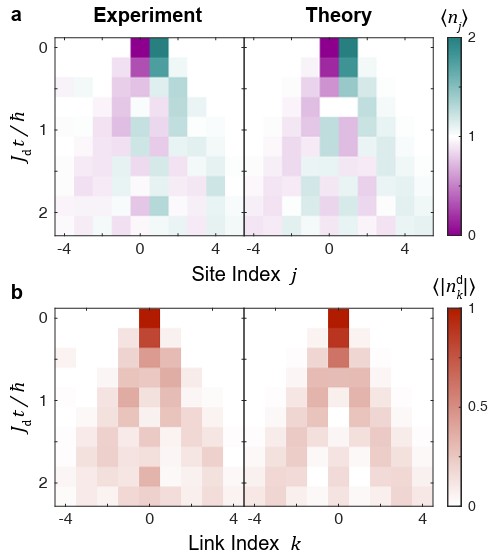
When particles move through a crystal or optical lattice, their motion can sometimes become frozen by strong external forces – yet collective motion may still emerge through subtle many-body effects. In this work, we explore such constrained dynamics by realizing a dipole-conserving Bose-Hubbard model, where single atoms are immobile but pairs of particles can move cooperatively while preserving the system’s center of mass, i.e. the overall dipole moment of the particle distribution. Starting from a one-dimensional chain of ultracold bosonic atoms in an optical lattice, we generate localized dipole excitations consisting of a hole and a doublon using site-resolved optical potentials and characterize their quantum walks and scattering dynamics. Our study provides a bottom-up investigation of a Hamiltonian with kinetic constraints, and paves the way for exploring low-energy phases of fractonic matter in existing experimental platforms.
Realization of 1D Anyons with Arbitrary Statistical Phase
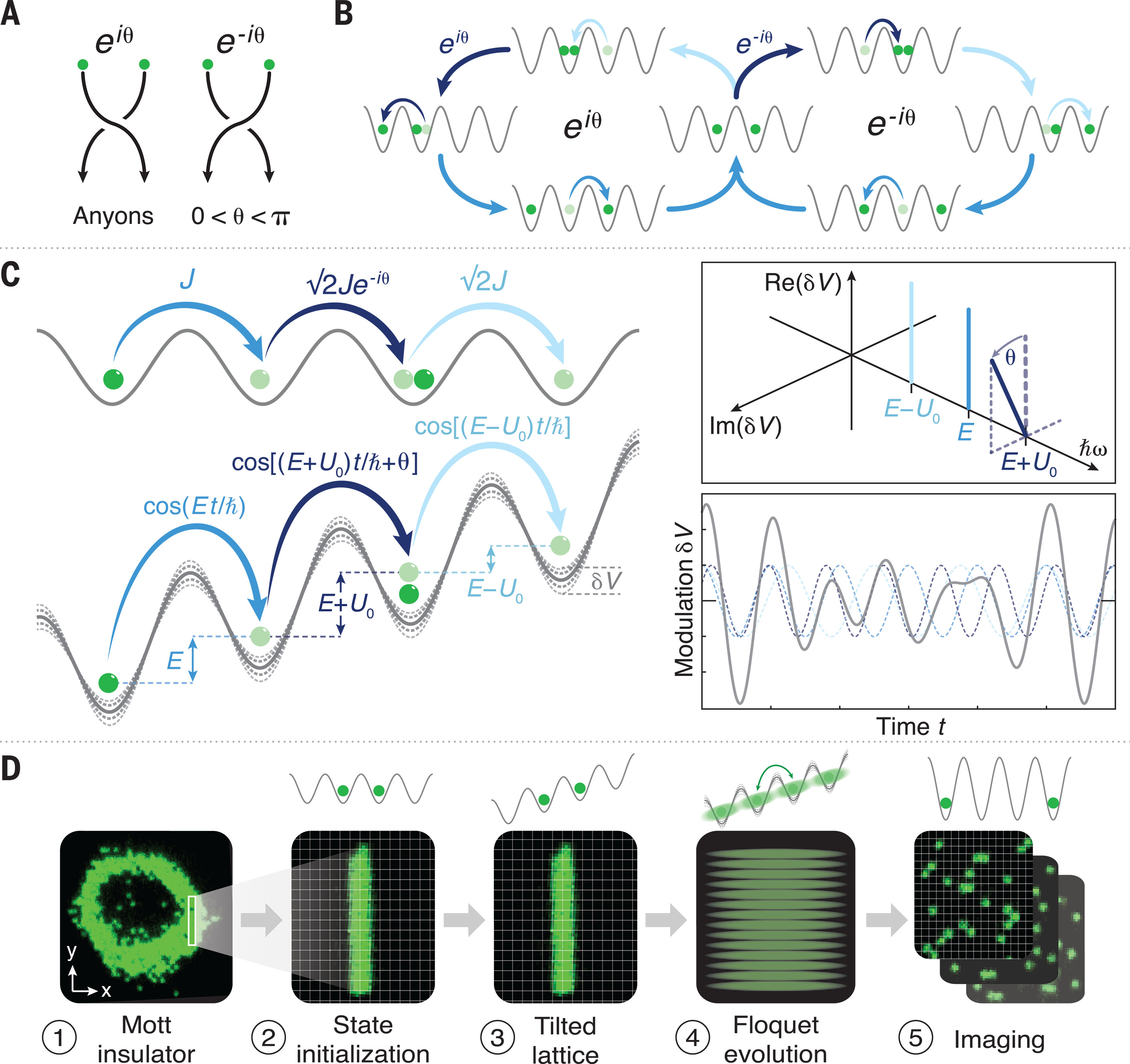
Low-dimensional quantum systems can host anyons, particles with exchange statistics that are neither bosonic nor fermionic. Despite indications of a wealth of exotic phenomena, the physics of anyons in one dimension (1D) remains largely unexplored. Here, we realize Abelian anyons in 1D with arbitrary exchange statistics using ultracold atoms in an optical lattice, where we engineer the statistical phase via a density-dependent Peierls phase. We explore the dynamical behavior of two anyons undergoing quantum walks, and observe the anyonic Hanbury Brown-Twiss effect, as well as the formation of bound states without on-site interactions. Once interactions are introduced, we observe spatially asymmetric transport in contrast to the symmetric dynamics of bosons and fermions. Our work forms the foundation for exploring the many-body behavior of 1D anyons.
Adiabatic State Preparation in a Quantum Ising Spin Chain
Probing the onset of quantum avalanches in a many-body localized system
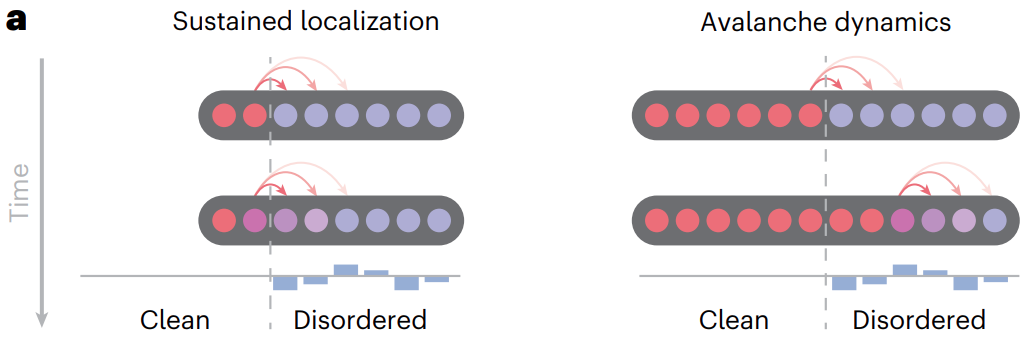 *These authors contributed equally.
*These authors contributed equally.
Strongly correlated systems can exhibit unexpected phenomena when brought in a state far from equilibrium. An example is many-body localization, which prevents generic interacting systems from reaching thermal equilibrium even at long times. The stability of the many-body localized phase has been predicted to be hindered by the presence of small thermal inclusions that act as a bath, leading to the delocalization of the entire system through an avalanche propagation mechanism. Here we study the dynamics of a thermal inclusion of variable size when it is coupled to a many-body localized system. We find evidence for accelerated transport of thermal inclusion into the localized region. We monitor how the avalanche spreads through the localized system and thermalizes it site by site by measuring the site-resolved entropy over time. Furthermore, we isolate the strongly correlated bath-induced dynamics with multipoint correlations between the bath and the system. Our results have implications on the robustness of many-body localized systems and their critical behaviour.
